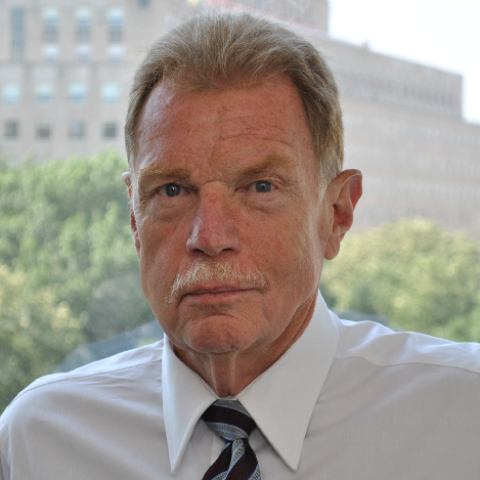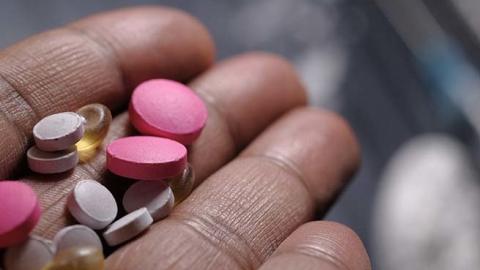In the March 17 National Review, George Will poses a standard critique of drug control, stressing the futility of the project—"Opioids and Mexican Drug Cartels: Worse Living through Chemistry.”
Will asserts that despite our efforts, drugs (such as heroin) are today cheaper and more potent than ever; that hitting cartel kingpins such as El Chapo can’t stop drug flow (because Mexico witnessed a 37 percent increase in heroin production while he has been incarcerated); and that the drug trade produces an unstoppable, yearly, $40 billion profit.
Beyond heroin and cocaine, Will is further alarmed by potent opioid synthetics such as fentanyl, now the principle cause of overdose deaths. Based on developments, neither a “supply side” nor a “demand side” strategy, he laments, will make any difference.
Finally, dismissing President Trump’s border plan, Will concludes that “Any wall would be irrelevant to stopping drug shipments,” because they actually pass through the Ports of Entry as commerce.
Will condemns virtually all aspects of the “War on Drugs.” But is he right?
First, about that border wall: most drugs are captured where we have resources, such as Ports of Entry. But just as clearly, substantial amounts of drugs are smuggled between Ports of Entry. At the border, where time and distance are the challenges, a wall channels human and drug flow into control points where detection resources can concentrate. It is also obvious that improvements at the Ports of Entry push smuggling to the area between them if it is not secured. We do not have adequate security in either area. The wall—and only the wall—allows full focus at the critical Ports of Entry.
Moreover, the real lesson is found in drug control history. Will doesn’t ask how it was that successful drug control of the recent past, including efforts against cocaine, heroin, methamphetamine, and youth marijuana use, suddenly lost ground.
The answer is simple: successful policies were abandoned.
The Obama administration announced end to the War on Drugs shortly after taking office in 2009, initiating a public policy “experiment” the result of which is today’s unprecedented death toll (now recognized as exponential in its continued rise).
The Washington Post recently documented the institutional failure of the Obama Administration regarding fentanyl. A similar pattern of abandonment of successful policies occurred in related areas.
Not only did Obama enable legalization of highly-potent commercial marijuana, in contravention of federal law, he launched “criminal justice” reform, granting pardons to hundreds of federal inmate, most of whom serving sentences for drug trafficking.
On the demand side, Obama Administration policies weakened both prevention and treatment programs, first by fostering norms of drug use acceptability, and then by “harm reduction,” which sustained continued drug use, while promising that the Affordable Care Act would increase drug treatment.
On the international front, US leadership withdrew from drug control partnerships in Colombia and Mexico; failed to confront China on fentanyl and methamphetamine precursors; and finally, failed to secure the Southwest border against human traffic, drug smuggling, and arms and financial flow.
Heroin overdose deaths surged, beginning in 2010, as supply increased after programs with Mexico against the cartel threat, as well as heroin poppy eradication and interdiction, were weakened. Mexican production of heroin has now exploded. As late as 2013 there were an estimated 26 Metric Tons of heroin produced in Mexico. Yet the most recent estimates, for the year 2017, now report an astonishing 111 Metric Tons of pure heroin targeted at the US market.
The same policy failure can be seen in Colombia, regarding cocaine. Supply-side programs, between 2001 and 2012, resulted in a collapse of Colombian cocaine production, falling 70 percent from a high of 700 Metric Tons to only 210 Metric Tons.
The positive impact was a sharp decline in US cocaine use, with the number of US users cut in half, along with a decrease in purity, an increase in price, and a reduction in cocaine overdoses, all while denying a major source of revenue to Mexican cartels. Colombia flourished.
But under President Obama these efforts were suppressed, and the predictable resurgence in Colombian cocaine has now led to a new record of 921 Metric Tons produced in 2017, increasing not only US cocaine use (up 81 percent since 2013), but overdose deaths, which have doubled in the same time frame. The trade has empowered violent cartels and narco-terrorists, while driving victims of violence from Central America and Mexico into US cities.
Those who believe, as Will appears to, that government policies “make the problem worse” miss the key facts—viewed over time, few threats are more responsive than the drug challenge to sound policy, when it is sustained by sound leadership.
And those who think drug use is a choice taken by “free people” ignore the manifest evidence that these substances fundamentally overwhelm the individual capacity for free choice. Couple that fact with the realization that encouragement to use, in the background noise of our culture, dangerously misleads the public about the danger.
Yes, there were missteps and weaknesses in the War on Drugs, and they should be corrected. But there is no realistic alternative to facing up to our responsibility. Drug use creates enormous tragedy, and our duty is to fight back with effective policies, thereby saving lives and liberating those trapped in despair.




















